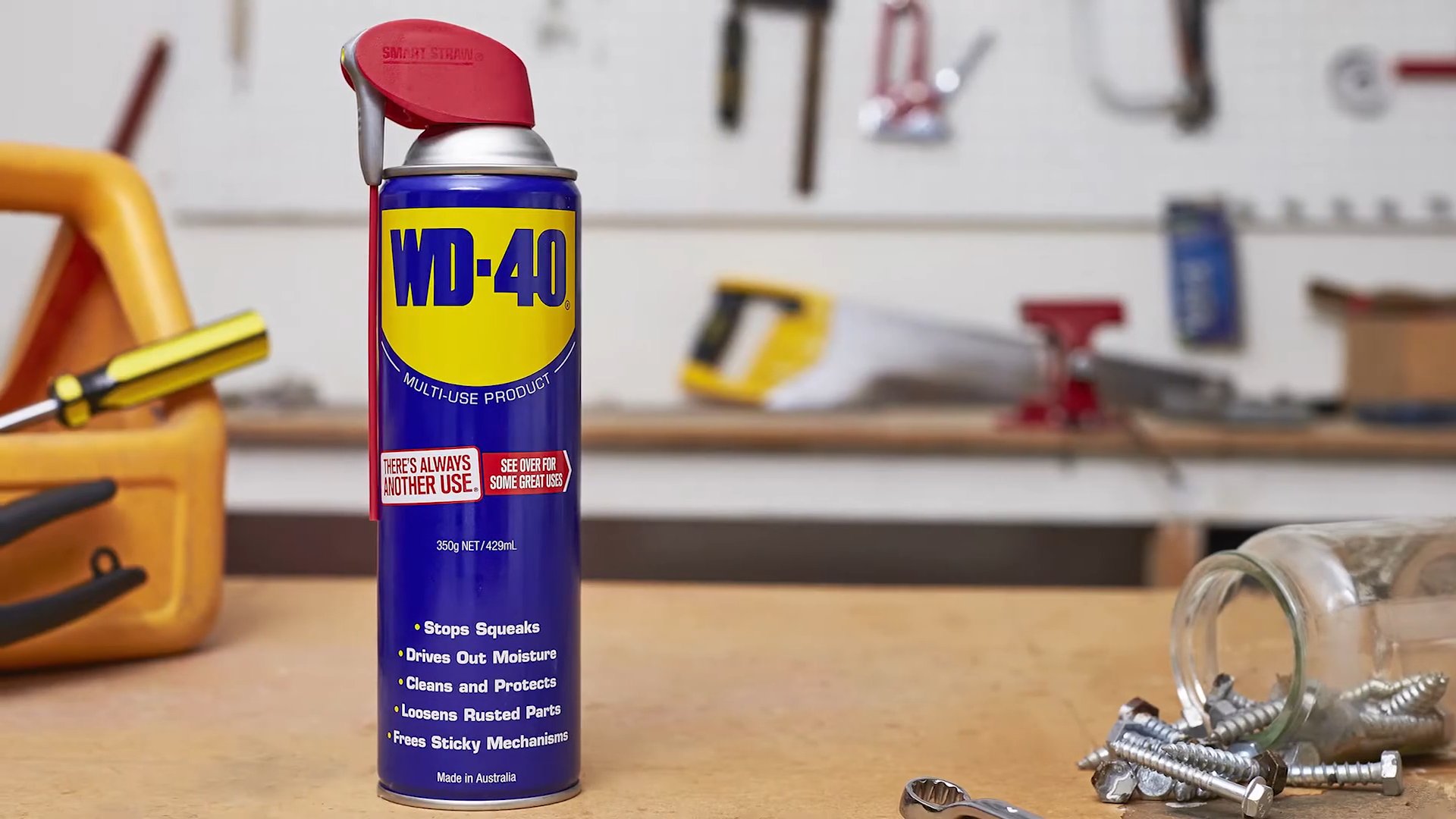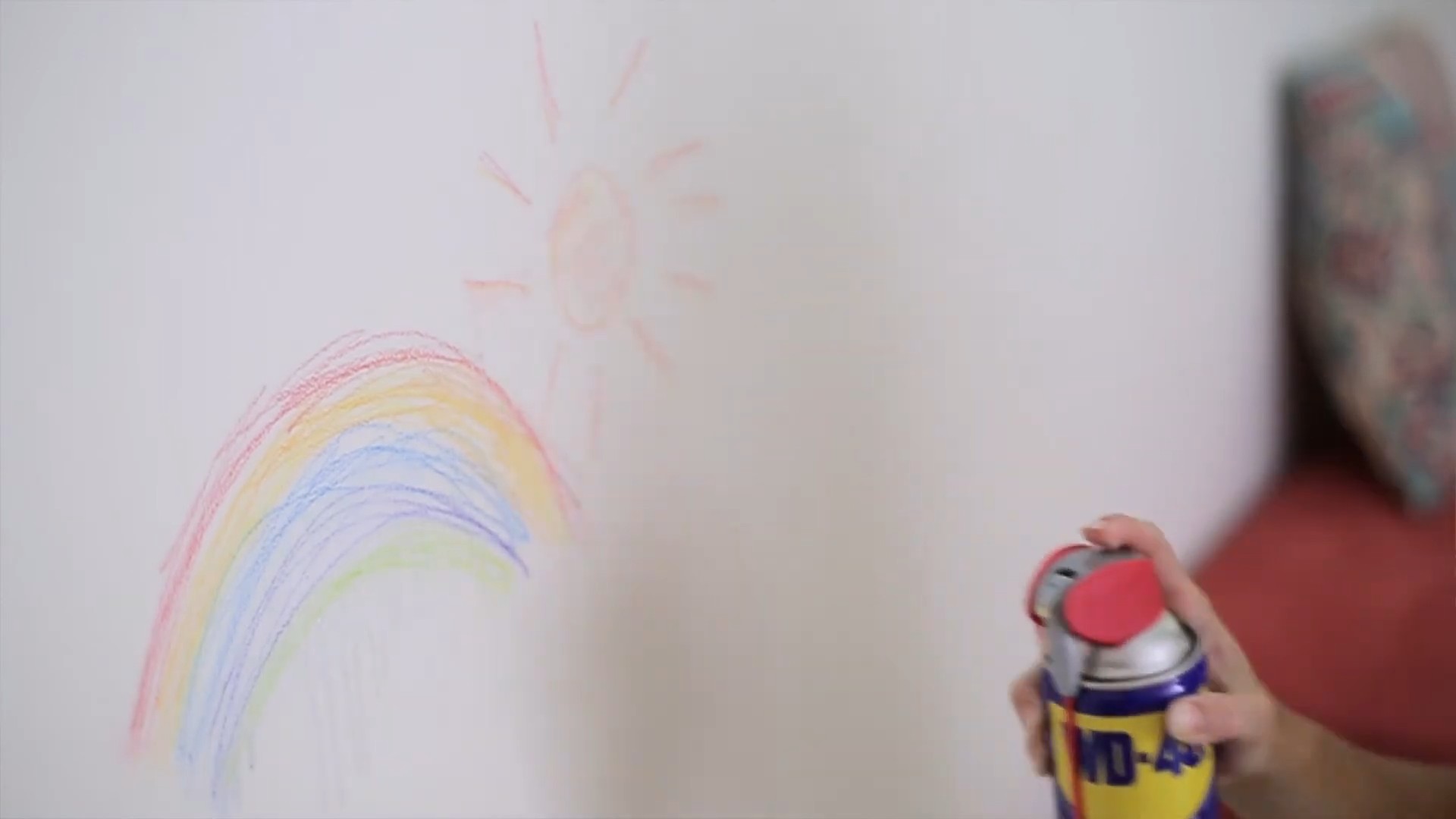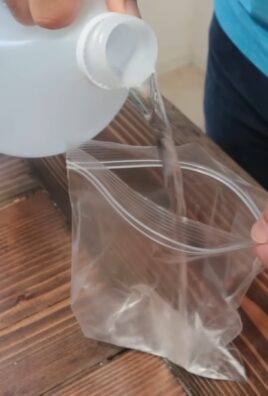WD40 life hacks – who knew these three simple words could unlock a world of possibilities beyond just squeaky hinges? I’m constantly amazed by the sheer ingenuity of everyday problems solved with a can of this magical lubricant. For decades, WD40 has been a staple in garages and workshops, but its uses extend far beyond the toolbox. Think of it as a modern-day elixir, a multi-purpose solution with roots stretching back to 1953 when it was created to protect missiles from rust and corrosion.
But why should you care about WD40 life hacks? Because life is full of little annoyances, from stubborn zippers to sticky residue, and let’s be honest, who has time to deal with them? This DIY article is your ultimate guide to unlocking the hidden potential of WD40. I’m going to show you how to tackle everyday challenges with ease, saving you time, money, and a whole lot of frustration. Get ready to discover a treasure trove of WD40 life hacks that will transform the way you approach household chores and DIY projects. Prepare to be amazed!

Unlock the Power of WD-40: Beyond the Squeak!
Hey there, fellow DIY enthusiasts! We all know WD-40 as the go-to for silencing squeaky hinges, but trust me, this magical can holds a universe of possibilities. I’m going to share some of my favorite, slightly unconventional, and seriously useful WD-40 hacks that will make your life a little easier (and maybe even a little more fun!). Get ready to be amazed!
Unsticking the Stuck: WD-40 as a Release Agent
WD-40’s lubricating properties aren’t just for hinges. It’s a fantastic release agent for all sorts of sticky situations.
* Rusty Bolts and Screws: This is a classic. A good soak with WD-40 can loosen even the most stubborn rusted fasteners.
* Stuck Zippers: Don’t yank! A tiny spritz of WD-40 on a cotton swab, carefully applied to the zipper teeth, can work wonders.
* Gum Removal: Yes, you read that right! WD-40 can help dissolve gum stuck in hair, on shoes, or even on furniture.
* Crayon Marks: Kids gone wild with the crayons? WD-40 can help lift those colorful creations from walls and other surfaces.
Step-by-Step: Releasing a Rusty Bolt
1. Assess the Situation: Before you start spraying, take a good look at the bolt. Is it heavily rusted? Is there any visible damage to the threads? This will help you gauge how much WD-40 you’ll need and how long to let it soak.
2. Apply WD-40 Liberally: Don’t be shy! Spray the WD-40 directly onto the bolt and the surrounding area. Make sure to get it into the threads as much as possible. I like to use the little red straw that comes with the can for more precise application.
3. Let it Soak: This is the key! Patience is your friend here. Let the WD-40 soak for at least 15-30 minutes. For really stubborn bolts, you might even want to let it soak overnight.
4. Tap Gently: After soaking, gently tap the bolt head with a hammer. This can help break up the rust and allow the WD-40 to penetrate further.
5. Attempt to Loosen: Now, try to loosen the bolt with a wrench or pliers. If it still won’t budge, apply more WD-40 and let it soak for a longer period.
6. Repeat if Necessary: Don’t give up! Sometimes it takes a few tries to loosen a really stubborn bolt. Just keep applying WD-40, letting it soak, and gently tapping until it finally comes loose.
Cleaning Powerhouse: WD-40 as a Cleaner and Degreaser
Beyond lubrication, WD-40 is surprisingly effective at cleaning and degreasing various surfaces.
* Removing Grease and Grime: From tools to car parts, WD-40 can dissolve grease and grime with ease.
* Cleaning Sticky Residue: Say goodbye to sticky tape residue, glue, and other stubborn adhesives.
* Polishing Stainless Steel: A light spray and a wipe with a clean cloth can bring back the shine to your stainless steel appliances.
* Removing Scuff Marks: WD-40 can help remove scuff marks from floors, walls, and even shoes.
Step-by-Step: Cleaning Sticky Residue
1. Identify the Residue: Determine what kind of sticky residue you’re dealing with. This will help you choose the right application method.
2. Apply WD-40: Spray WD-40 directly onto the sticky residue. For small areas, you can spray it onto a cloth or cotton swab first.
3. Let it Sit: Allow the WD-40 to sit for a few minutes to dissolve the adhesive. The amount of time will depend on how stubborn the residue is. Usually, 5-10 minutes is sufficient.
4. Wipe Away: Use a clean cloth or paper towel to wipe away the residue. You may need to apply a little pressure to remove stubborn spots.
5. Clean the Surface: Once the residue is gone, clean the surface with soap and water to remove any remaining WD-40. This will prevent the surface from becoming slippery or attracting dust.
Protecting and Preventing: WD-40 as a Protective Coating
WD-40 can also be used to protect surfaces from rust, corrosion, and moisture.
* Protecting Tools: A light coating of WD-40 can prevent rust from forming on your tools, especially if you live in a humid environment.
* Waterproofing Shoes: While not a long-term solution, WD-40 can provide temporary water resistance to your shoes.
* Preventing Rust on Garden Tools: Spray your garden tools with WD-40 before storing them for the winter to prevent rust.
* Protecting Battery Terminals: A light coating of WD-40 on your car battery terminals can prevent corrosion.
Step-by-Step: Protecting Garden Tools from Rust
1. Clean the Tools: Before applying WD-40, make sure your garden tools are clean and dry. Remove any dirt, debris, or rust with a wire brush or sandpaper.
2. Apply WD-40: Spray WD-40 liberally onto all metal surfaces of the tools, including the blades, handles, and any moving parts.
3. Wipe Off Excess: Use a clean cloth to wipe off any excess WD-40. You want a thin, even coating, not a thick, greasy layer.
4. Store Properly: Store your tools in a dry place, such as a shed or garage. This will help prevent rust from forming.
Unexpected Uses: WD-40 for the Odd Jobs
These are the hacks that really surprised me!
* Removing Water Rings from Wood Furniture: A quick spray and wipe can often remove those unsightly water rings.
* Untangling Jewelry: A little WD-40 can help loosen knots in delicate necklaces and bracelets.
* Cleaning Toilet Bowls: Yes, really! WD-40 can help remove hard water stains and mineral deposits from your toilet bowl.
* Removing Road Tar from Cars: WD-40 can dissolve road tar and make it easier to remove from your car’s paint.
Step-by-Step: Removing Water Rings from Wood Furniture
1. Test in an Inconspicuous Area: Before applying WD-40 to the entire water ring, test it in a small, hidden area of the furniture to make sure it doesn’t damage the finish.
2. Apply WD-40: Spray a small amount of WD-40 onto a clean, soft cloth.
3. Gently Rub the Water Ring: Gently rub the cloth over the water ring in a circular motion. Avoid applying too much pressure, as this could damage the finish.
4. Wipe Away Excess: Use a clean, dry cloth to wipe away any excess WD-40.
5. Polish the Surface: Polish the surface with a furniture polish to restore the shine and protect the finish.
Important Safety Precautions
While WD-40 is incredibly versatile, it’s important to use it safely.
* Ventilation: Always use WD-40 in a well-ventilated area.
* Flammability: WD-40 is flammable, so keep it away from open flames and heat sources.
* Skin Contact: Avoid prolonged skin contact with WD-40. Wear gloves if necessary.
* Eye Contact: Avoid getting WD-40 in your eyes. If contact occurs, rinse thoroughly with water.
* Food Contact: Do not use WD-40 on surfaces that come into contact with food.
So there you have it! A whole arsenal of WD-40 hacks to tackle everyday problems. Remember to always prioritize safety and test in an inconspicuous area before applying to delicate surfaces. Now go forth and conquer those squeaks, stains, and sticky situations! You’ve got this!

Conclusion
So, there you have it – a treasure trove of unexpected and incredibly useful WD40 life hacks that extend far beyond its traditional role as a lubricant. From rescuing waterlogged electronics to banishing stubborn stains and silencing squeaky hinges, WD40 proves itself to be a true multi-purpose marvel. But why is this DIY approach a must-try? Simply put, it’s about efficiency, cost-effectiveness, and unlocking the potential of a product you likely already have in your home. Instead of reaching for specialized cleaners or expensive repair services, WD40 offers a readily available and often surprisingly effective solution.
Think about the satisfaction of effortlessly removing crayon marks from your walls, or the relief of reviving a phone that seemed destined for the trash. These are the kinds of small victories that make DIY projects so rewarding. And the best part? You’re not just saving money; you’re also reducing waste by repurposing a product and avoiding the need to purchase multiple single-use items.
But the possibilities don’t stop here! Consider these variations and further explorations:
* **Rust Prevention Power-Up:** After removing rust with WD40, apply a thin coat of car wax for added protection against future corrosion, especially on outdoor tools and equipment.
* **Sticky Situation Savior:** For particularly stubborn adhesive residue, let WD40 soak for a longer period (up to an hour) before wiping it away. You can also use a plastic scraper to gently lift the residue.
* **Bug Barrier Booster:** Enhance the bug-repelling effect by adding a few drops of essential oils like citronella or eucalyptus to your WD40 solution before spraying around windows and doors.
* **Leather Love:** While WD40 can clean leather, always test it on an inconspicuous area first. Follow up with a dedicated leather conditioner to maintain its suppleness and prevent drying.
We’ve only scratched the surface of what WD40 can accomplish. The key is to experiment, be creative, and always exercise caution. Remember to work in a well-ventilated area and avoid spraying WD40 on surfaces that may be sensitive to its ingredients.
Now, it’s your turn to put these WD40 life hacks to the test! We encourage you to try out the tips and tricks we’ve shared, and most importantly, to share your own experiences. Did you discover a new and ingenious use for WD40? Did one of our suggestions work wonders for you? Let us know in the comments below! Your insights could help others unlock the full potential of this versatile product and discover even more ways to simplify their lives. Embrace the DIY spirit, unleash the power of WD40, and join the community of resourceful individuals who are finding innovative solutions to everyday challenges. We can’t wait to hear your WD40 success stories!
Frequently Asked Questions (FAQ)
Is WD40 safe to use on all surfaces?
No, WD40 is not safe to use on all surfaces. It’s crucial to exercise caution and test WD40 on an inconspicuous area before applying it to a larger surface, especially delicate materials like certain plastics, painted surfaces, and fabrics. WD40 can potentially damage or discolor these materials. Avoid using WD40 on porous surfaces, as it can be absorbed and difficult to remove. Always read the manufacturer’s instructions and warnings before using WD40 on any surface. When in doubt, consult a professional cleaner or repair specialist.
Can WD40 really revive a wet phone?
While WD40 can help displace water and prevent corrosion in electronic devices, it’s not a guaranteed solution for reviving a waterlogged phone. The success of this method depends on the extent of the water damage and the speed at which you act. Immediately remove the battery (if possible) and SIM card from the phone. Then, spray WD40 into the charging port, headphone jack, and other openings to displace the water. Allow the phone to dry completely for at least 24-48 hours before attempting to turn it on. Keep in mind that this is a risky procedure, and there’s a chance that the phone may still be damaged beyond repair. A professional electronic repair service is always the safest option for water-damaged devices.
Is WD40 safe to use around children and pets?
WD40 contains petroleum distillates and other chemicals that can be harmful if ingested or inhaled. It’s essential to keep WD40 out of reach of children and pets. When using WD40, work in a well-ventilated area to avoid inhaling the fumes. Avoid spraying WD40 directly onto surfaces that children or pets may come into contact with, such as toys or food bowls. If WD40 is accidentally ingested, seek medical attention immediately.
How long does WD40 last after it’s been sprayed?
The longevity of WD40’s effects depends on the application and environmental conditions. As a lubricant, WD40’s effectiveness may diminish over time, especially in high-friction or high-temperature environments. Reapplication may be necessary to maintain optimal performance. As a rust preventative, WD40 can provide protection for several months, but regular inspection and reapplication are recommended, particularly in humid or corrosive environments. For cleaning purposes, WD40’s effects are typically immediate, but the surface may require further cleaning with soap and water to remove any residue.
What are the best alternatives to WD40?
The best alternative to WD40 depends on the specific application. For lubrication, consider using silicone-based lubricants, Teflon-based lubricants, or white lithium grease. These alternatives often provide longer-lasting lubrication and are less likely to attract dirt and dust. For rust prevention, consider using rust inhibitors or protective coatings specifically designed for metal surfaces. For cleaning, consider using specialized cleaners formulated for the specific type of surface you’re cleaning. For loosening rusted bolts, consider using penetrating oils specifically designed for that purpose. Always research and choose the alternative that is best suited for your needs.
Can WD40 damage rubber or plastic?
Yes, WD40 can potentially damage certain types of rubber and plastic. Prolonged exposure to WD40 can cause some rubbers and plastics to swell, soften, or degrade. It’s essential to test WD40 on an inconspicuous area before applying it to a larger surface made of rubber or plastic. Avoid using WD40 on sensitive plastics like polycarbonate or polystyrene. When in doubt, consult the manufacturer’s instructions or use a lubricant specifically designed for rubber and plastic components.
Is WD40 flammable?
Yes, WD40 is flammable. It contains petroleum distillates, which are combustible. Avoid using WD40 near open flames, sparks, or other sources of ignition. Work in a well-ventilated area to prevent the accumulation of flammable vapors. Store WD40 in a cool, dry place away from heat and direct sunlight. Always read and follow the safety precautions on the product label.
Can WD40 be used to remove gum from clothing or hair?
Yes, WD40 can be used to remove gum from clothing or hair. Spray WD40 directly onto the gum and allow it to soak for a few minutes. Then, gently peel or scrape the gum away. Wash the treated area with soap and water to remove any WD40 residue. Be careful not to get WD40 in your eyes or mouth. This method may not be suitable for all types of fabrics or hair, so test it on an inconspicuous area first.
Does WD40 expire?
WD40 does not have a specific expiration date, but its effectiveness may diminish over time, especially if it’s not stored properly. Exposure to extreme temperatures, humidity, or direct sunlight can degrade the product and reduce its performance. To maximize the shelf life of WD40, store it in a cool, dry place away from heat and direct sunlight. If the product appears to be discolored, separated, or has a strange odor, it’s best to discard it and purchase a new can.



Leave a Comment